Recombinant Cynomolgus ACVR1 protein(Met1-Glu123), hFc-tagged
| Cat.No. : | ACVR1-8812C |
| Product Overview : | Recombinant Cynomolgus ACVR1 (F7A9J8) (Met1-Glu123) was expressed in HEK293 with the Fc region of Human IgG1 at the C-terminus. |
- Specification
- Gene Information
- Related Products
- Case Study
- Application
- Download
| Species : | Cynomolgus |
| Source : | HEK293 |
| Tag : | Fc |
| Protein Length : | 1-123 a.a. |
| Form : | Lyophilized from sterile PBS, pH 7.4. Normally 5 % - 8 % trehalose, mannitol and 0.01% Tween80 are added as protectants before lyophilization. |
| Molecular Mass : | The recombinant cynomolgus ACVR1 is a disulfide-linked homodimer. The reduced monomer comprises 342 amino acids and has a calculated molecular mass of 38.2 KDa.The apparent molecular mass of the protein is approximately 44 and 37 KDa respectively in SDS-PAGE. |
| Endotoxin : | < 1.0 EU per μg of the protein as determined by the LAL method |
| Purity : | > 95 % as determined by SDS-PAGE |
| Storage : | Samples are stable for up to twelve months from date of receipt at -20°C to -80°C. Store it under sterile conditions at -20°C to -80°C. It is recommended that the protein be aliquoted for optimal storage. Avoid repeated freeze-thaw cycles. |
| Reconstitution : | It is recommended that sterile water be added to the vial to prepare a stock solution of 0.2 ug/ul. Centrifuge the vial at 4°C before opening to recover the entire contents. |
| ◆ Recombinant Proteins | ||
| Acvr1-814M | Recombinant Mouse Acvr1 Protein, MYC/DDK-tagged | +Inquiry |
| ACVR1-1408H | Recombinant Human Activin A Receptor, Type I | +Inquiry |
| ACVR1-37H | Active Recombinant Human ACVR1, GST-tagged | +Inquiry |
| Acvr1-775M | Active Recombinant Mouse Acvr1 protein(Met1-Glu123), His&hFc-tagged | +Inquiry |
| ACVR1-0159H | Recombinant Human ACVR1 Protein (T172-C509), His tagged | +Inquiry |
| ◆ Cell & Tissue Lysates | ||
| ACVR1-478HCL | Recombinant Human ACVR1 cell lysate | +Inquiry |
| ACVR1-2686MCL | Recombinant Mouse ACVR1 cell lysate | +Inquiry |
| ACVR1-3097HCL | Recombinant Human ACVR1 cell lysate | +Inquiry |
| ACVR1-1305RCL | Recombinant Rat ACVR1 cell lysate | +Inquiry |
| ACVR1-967CCL | Recombinant Canine ACVR1 cell lysate | +Inquiry |
Case 1: Omi M, et al. J Biol Chem. 2019
Bone morphogenetic proteins (BMPs) are key in osteoclast development, but their specific mechanisms in osteoclastogenesis are unclear. This research indicates that Activin A receptor type 1 (ACVR1), a BMP receptor crucial for skeletal development, is involved in osteoclastogenesis as BMP-7, which binds to ACVR1, promotes osteoclast differentiation. Mice studies showed that ACVR1 mediates BMP signaling in osteoclast fusion and activity. BMP-2 and BMP-7 activate SMAD1/5/9 signaling through different receptors, with ACVR1 being essential for BMP-7 signaling in osteoclasts. Inhibition of SMAD1/5/9 phosphorylation blocked osteoclastogenesis, and increased BMP signaling was found to promote NFATc1 nuclear translocation, which was also inhibited by specific treatments.
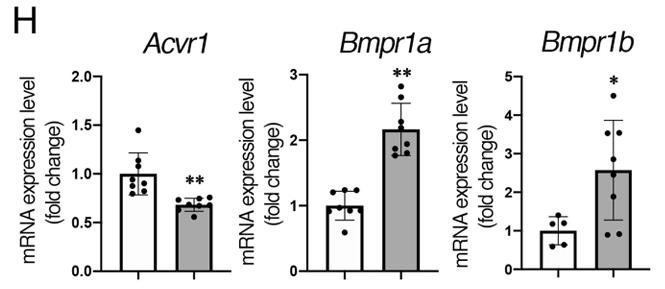
Fig1. Comparison of expression levels of Acvr1, Bmpr1a, and Bmpr1b between controls, and Acvr1 cKO osteoclasts were measured by qRT-PCR.
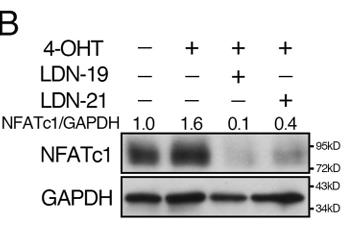
Fig2. BMMs from control (caAcvr1) and caAcvr1-mutant (caAcvr1;Ubi-CreTM) mice were incubated with LDN-19 and LDN-21 for 2 days, and the protein lysate was harvested.
Case 2: Zhang X, et al. Arch Oral Biol. 2018
To investigate the impact of the BMP type I receptor ACVR1 on periodontium development, researchers conditionally inactivated Acvr1 in Osterix-expressing cells. Micro-CT scans and histological analysis of mandibles from control and cKO mice at postnatal day 21 revealed that cKO mice had reduced alveolar bone mass and mineral density due to increased osteoclast numbers and activity. Osteoblast differentiation markers were downregulated, and the RANKL/OPG ratio was upregulated in cKO mice. The periodontal ligament in cKO mice showed disorganized collagen fibers with reduced Col I and periostin signals, but no difference in cellular cementum was observed. ACVR1 is crucial for periodontium development, negatively regulating osteoclast differentiation in osteoblasts through the RANKL/OPG axis, thus promoting alveolar bone formation.
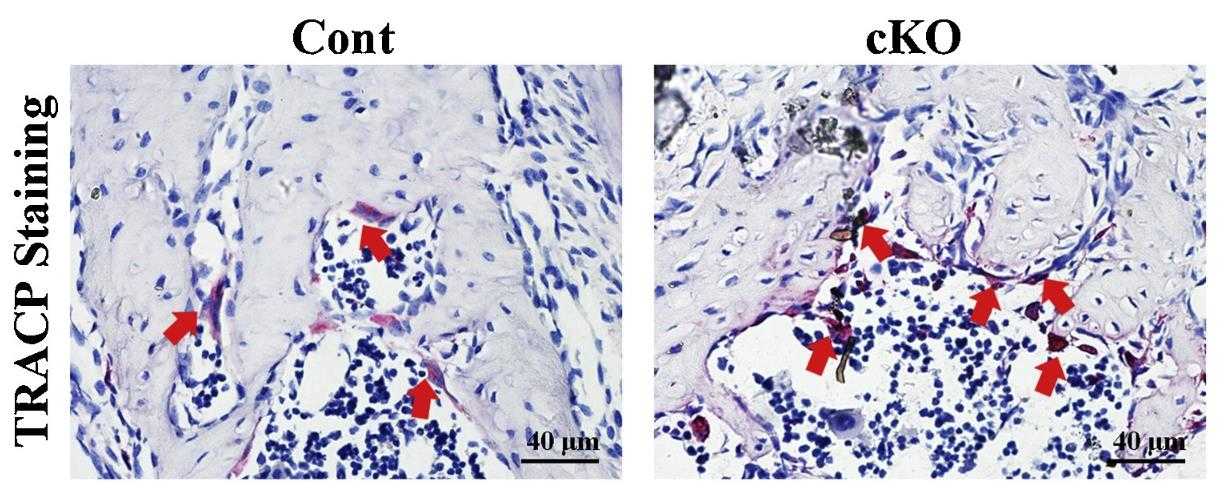
Fig1. TRACP staining of the furcate region of the mandibular first molar in the control and the cKO mice at PN21.
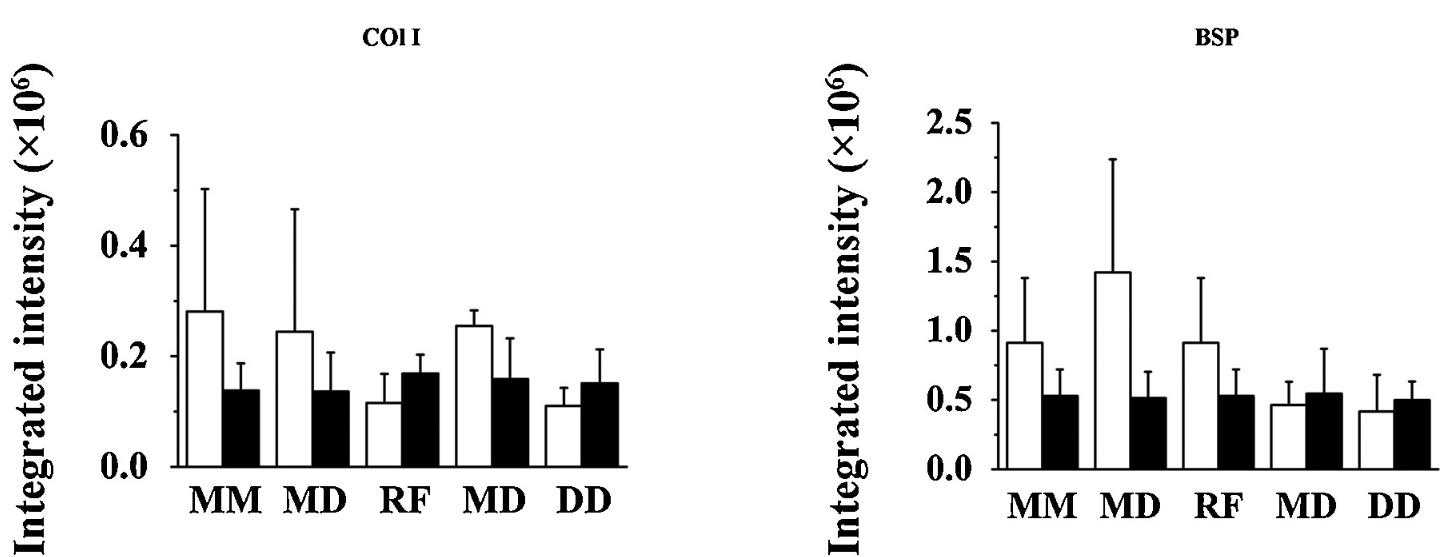
Fig2. The integrated intensity analyses for Col I and BSP staining.
Recombinant cynomolgus monkey ACVR1 protein is an important biomedical research tool with a wide range of applications in multiple fields. In basic research, ACVR1 protein is essential for understanding signal transduction. As part of the bone morphogenetic protein (BMP) signal transduction pathway, it is involved in cell growth, differentiation and development processes. The study of this protein helps to reveal the signal transduction process and its role in different biological functions. In addition, ACVR1 protein has applications in gene function research, especially in the study of mechanisms in genetic diseases such as fibrous dysplasia (FOP). In disease model research, ACVR1 protein is used to study bone-related diseases and tumors, including FOP and certain types of cancer, in which heterogeneous activation of the BMP signaling pathway is associated with disease occurrence.
In the field of drug development, ACVR1 protein is a potential therapeutic target, especially in targeted therapy. Due to the role of ACVR1 in a variety of diseases, drug development targeting this protein may provide new treatment options, including the development of inhibitors to block its abnormal signal transduction. In regenerative medicine, ACVR1 protein has potential for application in tissue engineering, especially bone tissue engineering, to promote bone formation. In clinical diagnosis, changes in the level of ACVR1 protein may serve as a diagnostic marker for certain diseases.
In addition, ACVR1 protein also plays an important role in cardiovascular disease and cancer research. In cardiovascular disease, ACVR1 is involved in the morphogenesis of the heart and valves, and its loss may lead to changes in the expression of cardiac differentiation-related genes, thereby promoting the occurrence of cardiovascular disease and congenital heart defects. In cancer research, ACVR1 is associated with a variety of cancer types, including as a cancer driver gene in diffuse intrinsic pontine glioma (DIPG), and its role in adult glioblastoma and ovarian cancer. These studies not only enhance our understanding of the function of ACVR1 in health and disease, but also provide a scientific basis for the development of new therapeutic strategies.
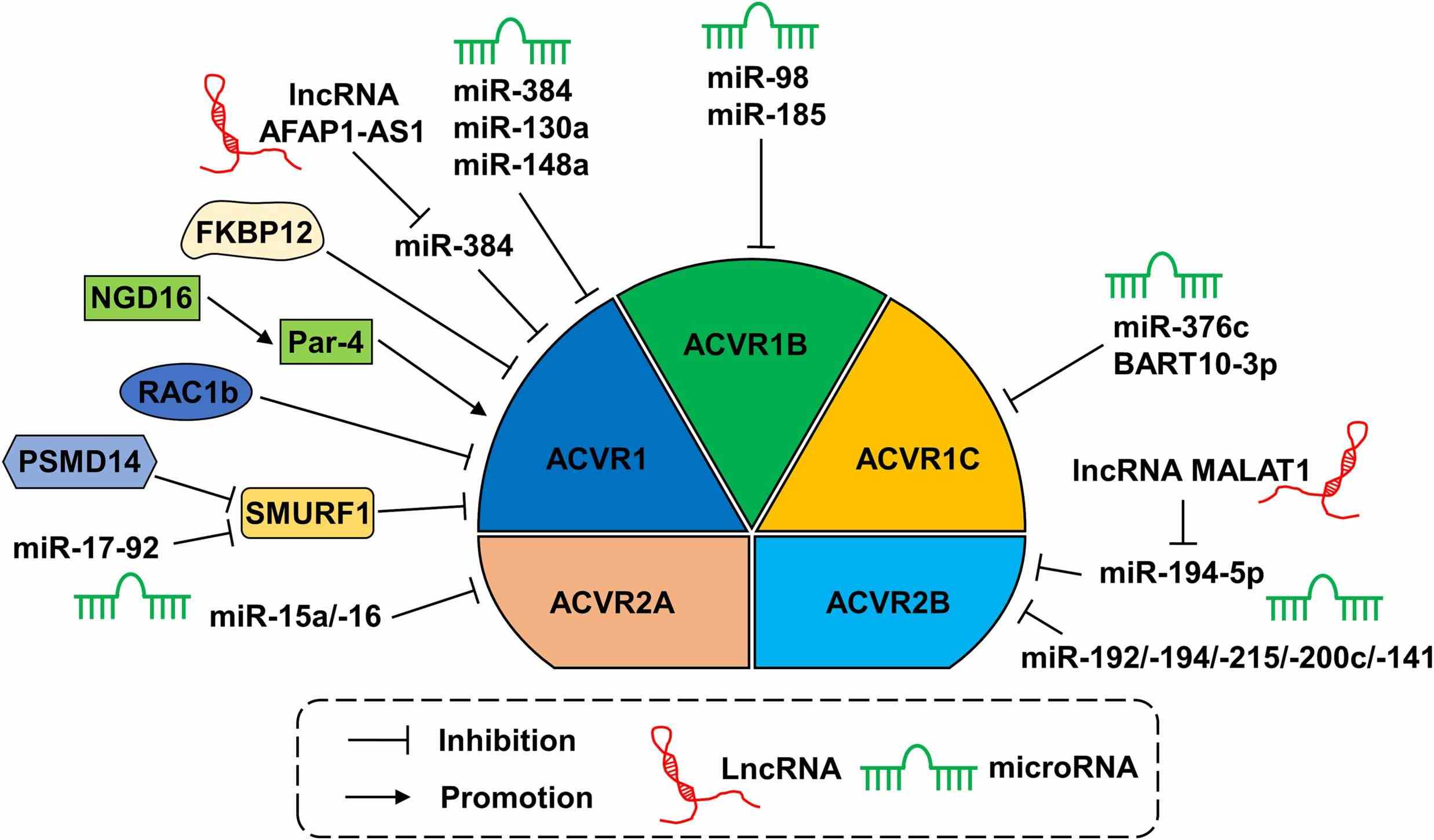
Fig1. Regulatory factors of activin receptors in human cancers. (Ruochen Du, 2024)
Not For Human Consumption!
Inquiry
- Reviews
- Q&As
Ask a Question for All ACVR1 Products
Required fields are marked with *
My Review for All ACVR1 Products
Required fields are marked with *
Inquiry Basket


